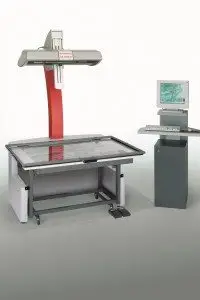Can We Get a Resolution? Taking a Closer Look at Image Quality and DPI

Last week, in our blog, “Can We Get A Resolution? The mystery of the “right” DPI/PPI,” we explored the question, “What is the Right dpi/ppi?” The bottom line is that dpi/ppi is not “one size fits all.” As Christopher Crowley, our company president noted, “the right dpi/ppi is really a balancing act between the expected end use of the file (archival vs. non), the cost of file storage, the cost of bandwidth to share/transmit files, the cost of equipment to quickly view and edit large files and – finally – the cost to reproduce the files in print. The higher the resolution, the higher the hidden costs.”
Long story short, the right dpi/ppi varies depending on your specific needs. However, a resolution in dpi is only part of the image quality equation, explains Patrice Letailleur of Zeutschel GmbH, a leading specialist in digital and analog storage systems.
“In the scanning world – which is far different than that of standard photography – we take into account eight parameters that influence the quality of a captured image,” says Letailleur. “Resolution is just one of these.”
The other seven parameters are geometry and distortion, channel registration, noise, linearity, dynamic range, color accuracy and homogeneity (illumination). “Fortunately,” continues Letailleur, “there are now special tools and software that can quickly control these parameters. No longer do you need to use the human eye to control resolution and other parameters.” With these tools, users are now able to:
- control scanner image quality
- define quality requirements
- quickly run tests to with different settings to find the best results
Letailleur points out that “the quality of the scanner and its components (CCD, lens, light, mechanism, etc.) also play a crucial role in image quality.” He gives this very abbreviated overview:
- Flatbed Scanners: Flatbed scanners produce good quality at a reasonable price. The paper is near the camera, light is controlled and outside light is usually not an influence. However, these scanners are not ideal for books, maps or old and precious documents, which may be fragile or light-sensitive. In these instances, you should choose a higher-end book scanner.
- Book Scanners: Archival book scanners have their capturing module placed in a head that is far away from the document to be captured (thus the term, “planetary scanner”). This is ideal for old, precious documents and books, but does create challenges in terms of image quality. The surrounding environment can influence the quality of the document captured.
“The primary point,” instructs Letailleur, “is that resolution (dpi/ppi) is just a part of the capture equation. When you are making a decision as to the best output, you must consider all eight parameters, which includes considering the capabilities of the scanners to be purchased or used on your imaging project.
For a detailed look at image quality, view this presentation Letailleur recently shared in Boston with notable members of academic and corporate special collections.
For over 20 years, The Crowley Company has been the exclusive distributor of Zeutschel book scanners in North America. This relationship has endured the test of time because of the inarguable quality, knowledge, engineering, and technology that goes into each Zeutschel scanner and archive writer.
Crowley Imaging: Digital and Analog Conversion Services
The Crowley Company is a unique blend of manufacturer, distributor and service bureau. Crowley professionals have honed the skills needed to carefully transport, catalog, digitize/process and return countless rare and valuable collections, large and small, public and private. We utilize a wide variety of commercial and custom equipment, to preserve historic, corporate and culturally significant collections.
We have the ability to scan (or provide the scanners) to the resolution best suited for the job.
If you have any questions about Image Quality and DPI, please contact the Crowley Company by calling (240) 215-0224. General inquiries can be emailed to [email protected].
Please follow The Crowley Company on Facebook, Twitter, Google+, LinkedIn, Pinterest, and YouTube.
